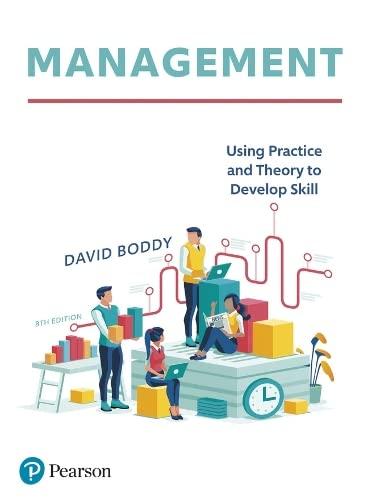Question
The Case Study About Nelson Mandela's Leadership: I have taken a moment here to rest, to steal a view of the glorious vista that surrounds
The Case Study About Nelson Mandela's Leadership:
"I have taken a moment here to rest, to steal a view of the glorious vista that surrounds me, to look back on the distance I have come. But I can rest only for a moment, for with freedom comes responsibilities, and I dare not linger, for my long walk is not yet ended." -Nelson Mandela, Long Walk to Freedom. Nelson Mandela grew up in the Transkei area of South Africa as a member of royalty within the Xhosa tribe. He was groomed to counsel the rulers of the tribe. After his father died, he was formally adopted by Chief Dalindyebo, acting regent of the Thembu people, and had many first-hand opportunities to observe the chief's leadership skills in action as he led tribal councils in the community. But Mandela chose not to follow his predetermined path; instead, he left the Transkei after completing his second year of studies at Fort Hare University, and moved to Johannesburg, where he joined the African National Congress (ANC). His education continued, and his struggle for freedom began.
Nelson Mandela remains one of the world 's most revered statesmen, and led the struggle to replace the apartheid regime of South Africa with a multi-racial democracy. He has spent his entire life, including 27 years in prison, fighting for social justice. He discovered the importance of education as a tool for understanding the history andcultureof his own people, and of other groups. Retaining a lifelong thirst for education and knowledge, hecompletedhislawdegreewhileinjail, and continued to study throughhis years of imprisonment on Robben Island. Mandela was also instrumental in encouraging fellow political prisoners to continue their education - so much so that warders would sometimes refer to hisprisonblockas 'Mandela University'. Despite many yearsinjail,he emerged to become South Africa's first black president and to play a leading role in the drive for peace in other spheres of conflict. He showed true statesmanship by reaching out a reconciliatory hand to his oppressors. In 1993, together with his presidential predecessor, F. W. de Klerk, he won the Nobel Peace Prize.
From his early days observing tribal politics, Nelson Mandela learned that listening is often more important than talking. Having learned this skill, he gained a reputation as someone who could hear and be open to differing points of view, but at the same time maintain an unwavering commitment to his beliefs. 'Often, my own opinion will simply represent a consensus of what I heard in the discussion ... a leader is like a shepherd. He stays behind the flock, letting the nimblest go out ahead, whereupon the others follow, not realizing that all along they are being directed from behind.' Mandela stepped down as president after the ANC's landslide victory in 1999, and Thabo Mbeki became the second democratically elected president of South Africa. Since then, Mandela has become South Africa's highest profile ambassador, campaigning for HIV/AIDS initiatives and securing his country's right to host the 2010 soccer World Cup. Former US president Bill Clinton is one of his many admirers, stating: 'Every time Nelson Mandela walks into a room we all feel a little bigger, we all want to stand up , we all want to cheer, because we'd like to be him on our best day'.
The Question:
What are the leadership characteristics of Nelson Mandela?
Mention 35 (Thirty-five) characteristics.
Critical Instructions:
- My question is concerning the field (Subject) of Leadership only and not political science and not history.
- Your answer to my question must only be regarding the field (Subject) of Leadership.
- Your answer to my question must be based on the above case study's information as you must prioritize the above case study's information above any other information that you might take from other sources. Therefore, once you thoroughly and comprehensively use the above case study's information in your answers, you can include other sources in your answers.
- Regarding particularly the number (quantity) required within my question, you must only use bullet points based specifically on the number (quantity) required as that part of my question clearly is not asking for paragraphs. For example, when the question requires 45 things, you should provide Forty-five things in bullet points. Clear and simple.
- The information mentioned in your answers must be in detail and comprehensive. If your answer is not in detail and not comprehensive per bullet point, then quite frankly, your answer is unsatisfactory and officially unhelpful because you have not followed my instructions.
- My question is perfectly clear, and it can not get more straightforward than this quite explicitly.
Step by Step Solution
There are 3 Steps involved in it
Step: 1

Get Instant Access to Expert-Tailored Solutions
See step-by-step solutions with expert insights and AI powered tools for academic success
Step: 2

Step: 3

Ace Your Homework with AI
Get the answers you need in no time with our AI-driven, step-by-step assistance
Get Started


